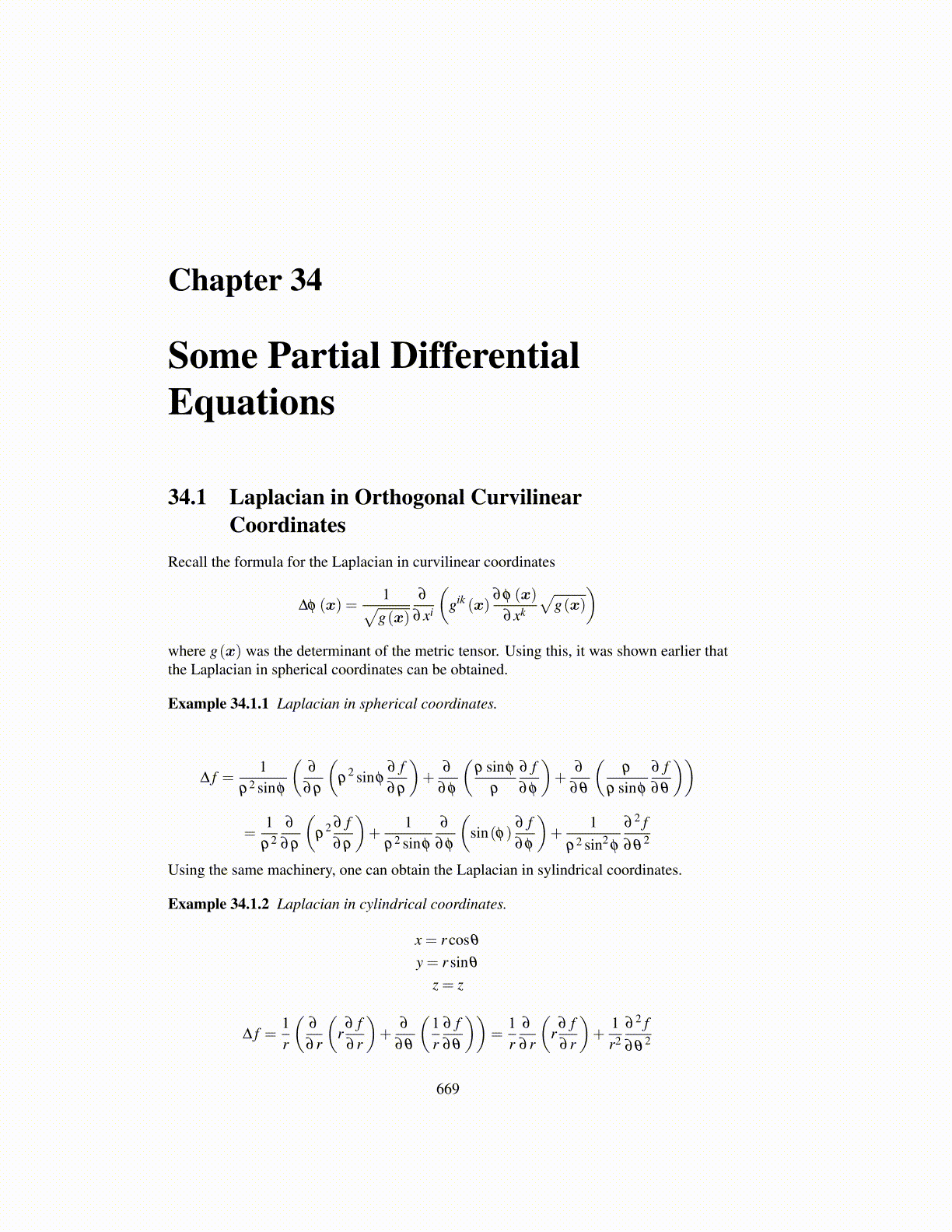
Chapter 34
Some Partial DifferentialEquations
34.1 Laplacian in Orthogonal CurvilinearCoordinates
Recall the formula for the Laplacian in curvilinear coordinates
∆φ (x) =1√
g(x)
∂
∂xi
(gik (x)
∂φ (x)
∂xk
√g(x)
)where g(x) was the determinant of the metric tensor. Using this, it was shown earlier thatthe Laplacian in spherical coordinates can be obtained.
Example 34.1.1 Laplacian in spherical coordinates.
∆ f =1
ρ2 sinφ
(∂
∂ρ
(ρ
2 sinφ∂ f∂ρ
)+
∂
∂φ
(ρ sinφ
ρ
∂ f∂φ
)+
∂
∂θ
(ρ
ρ sinφ
∂ f∂θ
))
=1
ρ2∂
∂ρ
(ρ
2 ∂ f∂ρ
)+
1ρ2 sinφ
∂
∂φ
(sin(φ)
∂ f∂φ
)+
1ρ2 sin2
φ
∂ 2 f∂θ
2
Using the same machinery, one can obtain the Laplacian in sylindrical coordinates.
Example 34.1.2 Laplacian in cylindrical coordinates.
x = r cosθ
y = r sinθ
z = z
∆ f =1r
(∂
∂ r
(r
∂ f∂ r
)+
∂
∂θ
(1r
∂ f∂θ
))=
1r
∂
∂ r
(r
∂ f∂ r
)+
1r2
∂ 2 f∂θ
2
669
Chapter 34Some Partial DifferentialEquations34.1. Laplacian in Orthogonal CurvilinearCoordinatesRecall the formula for the Laplacian in curvilinear coordinates__ i d i dg (x)89 2) = To au (88) Seve)where g(a) was the determinant of the metric tensor. Using this, it was shown earlier thatthe Laplacian in spherical coordinates can be obtained.Example 34.1.1 Laplacian in spherical coordinates.1 0 of psing of i) p ofa sang (3p G ae 5) 7 ( p 35) +90 (pane98))_ 10 ( 3,0f 1 0(/. .. Of 1 of=p (? 30) * prune 36 (* (0) 55) * arate p?sin’ 9 06"Using the same machinery, one can obtain the Laplacian in sylindrical coordinates.Example 34.1.2 Laplacian in cylindrical coordinates.x=rcos@y=rsin@Z=Z_ 1/9 (of a (lof of 1 ofat= > (5 (55) +56 ($55) ) > ror 5. (56) + 23592669